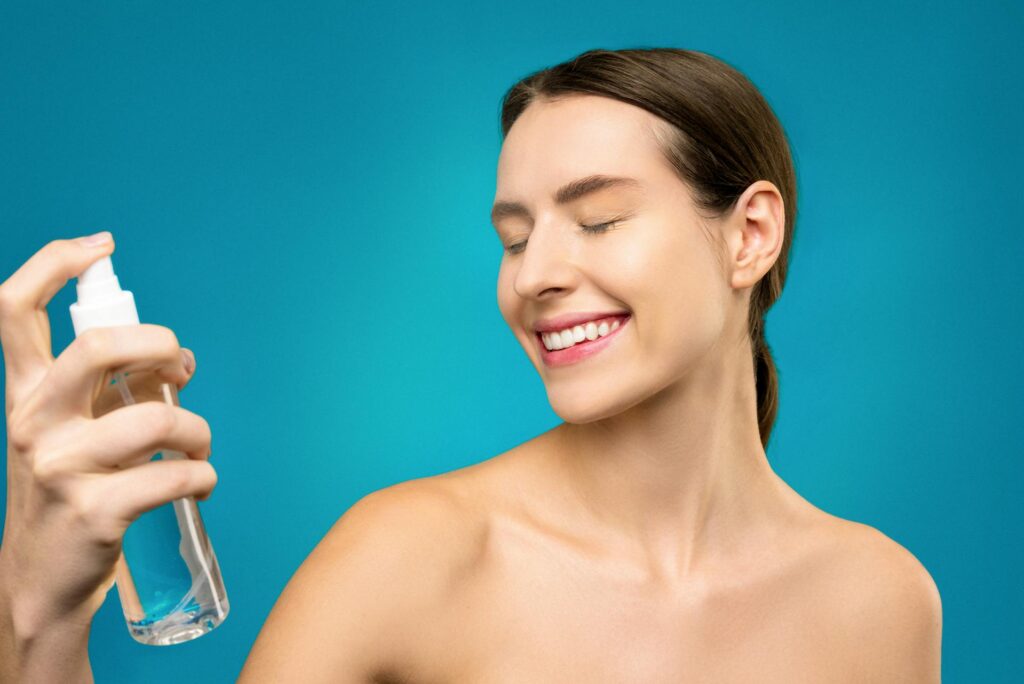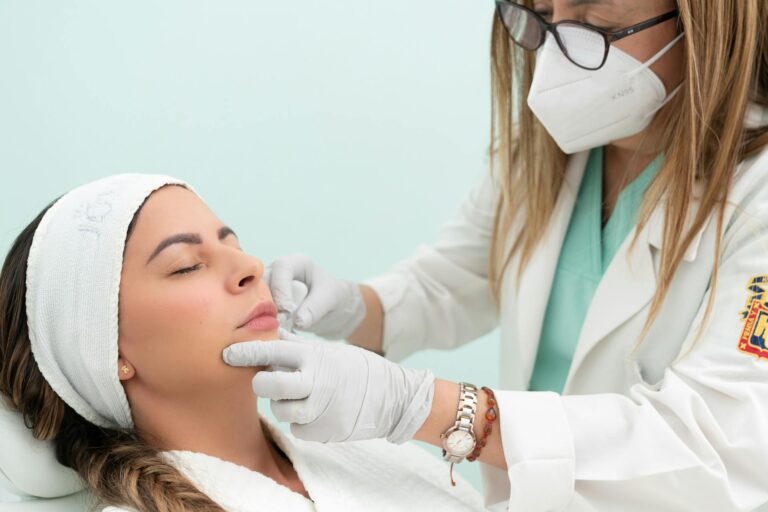
Navigating the world of Botox can be an exciting experience, and understanding proper aftercare is essential for achieving the best results. With the cost of Botox in the UK being a worthwhile investment in your appearance, following the right steps post-treatment ensures you make the most of its benefits.
This guide provides essential Botox aftercare tips for UK patients, covering everything from effective skincare routines to activities to avoid post-treatment.
Whether your goal is to maintain a youthful appearance or ensure a smooth recovery, this article highlights the dos and don’ts to help you maximize your Botox experience.
What to Do After Botox Treatment?

After undergoing Botox treatment, patients in the UK typically want to ensure they achieve the optimal results while minimising any potential side effects. This requires following important post-treatment care guidelines that focus on common concerns such as swelling, bruising, and redness.
Proper aftercare plays a vital role in maximising the longevity of the injectables and ensuring satisfaction with the aesthetic outcomes. Adhering to specific dos and don’ts is essential, as it will help facilitate a smooth recovery process and enhance the treatment results.
1. Apply Ice to the Treated Area
Applying ice packs to the treated area after Botox injections stands out as one of the most effective strategies to minimise swelling, bruising, and redness, thereby facilitating a smoother recovery for patients.
Using ice packs not only numbs the area, providing immediate pain relief, but it also constricts blood vessels, which can significantly reduce post-procedure inflammation. For optimal results, it is advisable to apply the ice packs for approximately 10-15 minutes at a time. Frequency is essential; repeating this every hour for the initial hours can greatly enhance the healing process.
This straightforward technique works well alongside aftercare products and anti-inflammatory measures that further support recovery. Incorporating elements like cooling gels infused with beneficial essential oils can soothe skin sensitivity and provide additional hydration, ultimately enhancing the effectiveness of this method.
2. Avoid Touching the Treated Area
Avoiding any contact with the treated area after receiving Botox is crucial, as touching it can lead to skin irritation and interfere with the desired results of the injectable treatments.
It is important for individuals to recognise that even a simple light touch can inadvertently cause the product to spread to unintended areas, resulting in uneven outcomes and unwanted facial expressions. The careful balance achieved by the injector can easily be disrupted, which is why following post-procedure advice is essential for anyone undergoing treatment. This guideline also serves as an important contraindication to ensure safe healing and optimal results.
Incorporating these practices into a comprehensive skincare routine helps maintain the integrity of the treatment and supports the overall effectiveness of the product, ultimately promoting lasting satisfaction with one’s appearance.
3. Stay Upright for 4 Hours
Remaining upright for at least four hours after a Botox treatment is essential. This practice helps ensure that the injectables settle properly and reduces the risk of complications during the recovery period.
This guideline is vital for enhancing the effectiveness of the procedure while also promoting patient comfort throughout the healing process. By following this advice, individuals can prevent issues such as bruising or uneven results that may arise if the injectables shift during the initial recovery phase.
It is important for patients to recognise that adhering to activity restrictions during this time, such as avoiding vigorous exercise or bending over, can significantly influence their treatment expectations and overall outcomes.
Therefore, following these recommendations not only supports the desired aesthetic results but also contributes to a smoother and more satisfying recovery experience.
4. Avoid Strenuous Activities
It is important for patients to refrain from engaging in strenuous activities for at least 24 hours following Botox treatment, as physical exertion can disrupt the desired results and increase the likelihood of swelling or bruising.
During this initial recovery phase, it is advisable to avoid high-impact workouts, heavy lifting, and intense sports. Instead, gentle activities such as leisurely walks or light stretching can help promote circulation without placing excessive strain on the body.
Additionally, maintaining proper hydration and incorporating a balanced diet rich in nutrients can significantly support the healing process. Practising relaxation techniques, such as deep breathing or mindfulness, can also enhance emotional well-being, contributing to a comprehensive approach to recovery.
It is essential for individuals to pay attention to their bodies and prioritise self-care, ensuring they achieve the best possible outcomes from their treatment.
5. Be Gentle with Your Skin
Being gentle with your skin after a Botox treatment is crucial. Aggressive cleansing or the use of strong skincare products can irritate the treated area and hinder the recovery process.
After such a procedure, it is important to adopt a nurturing skincare routine that emphasizes soothing and rejuvenation. Start by using a mild, fragrance-free cleanser to gently wash your face. This approach helps remove impurities without causing additional sensitivity.
After cleansing, applying a lightweight, hydrating moisturiser that includes calming ingredients such as hyaluronic acid or aloe vera can significantly enhance skin texture and hydration levels. It is advisable to avoid harsh exfoliants or products containing retinol during this initial recovery phase to ensure safety and prevent any potential adverse reactions.
Consistent hydration ultimately supports the healing process and enhances the results of the treatment.
6. Avoid Sun Exposure
After receiving Botox injections, it is essential to protect the treated areas from sun exposure to prevent adverse reactions and ensure optimal healing.
The skin is particularly sensitive following such procedures, making the incorporation of sun protection into your skincare routine crucial. It is advisable to use a broad-spectrum sunscreen with an SPF of at least 30, as this effectively shields the skin from harmful UVA and UVB rays that can worsen common issues such as redness, swelling, and hyperpigmentation.
Reapplying sunscreen every two hours, especially when spending time outdoors, can significantly enhance protection. Additionally, wearing protective clothing, such as wide-brimmed hats and UV-protective garments, can provide an extra layer of defence.
It is also beneficial to tailor these practices to individual skin types. For instance, opting for oil-free sunscreen for oily skin or mineral-based options for sensitive skin can ensure a customised approach to skincare following treatment.
7. Avoid Alcohol and Caffeine
Patients are encouraged to refrain from consuming alcohol and caffeine after undergoing Botox treatment. Both substances can negatively impact the healing process, potentially leading to increased swelling and discomfort.
Alcohol consumption can dilate blood vessels, which may result in heightened bruising and a prolonged recovery period. Caffeine, on the other hand, can contribute to increased anxiety and dehydration, factors that could hinder overall healing. It is important for individuals to take these considerations into account as they make lifestyle adjustments following their procedures.
Patient education is vital in promoting awareness of the significance of post-treatment care. Ignoring these recommendations can not only lead to undesirable side effects but also compromise the treatment’s results.
By prioritising hydration, rest, and avoiding stimulants, patients can effectively support their body’s natural recovery processes.
What Not to Do After Botox Treatment?

It is just as important to understand what actions to avoid following Botox treatment as it is to know the recommended steps.
Certain mistakes can result in undesirable side effects and negatively affect the outcomes of the treatment.
1. Do Not Rub or Massage the Treated Area
One of the most important aftercare guidelines is to refrain from rubbing or massaging the treated area, especially in different areas of the face, such as the forehead and around the eyebrows, as doing so can lead to skin irritation and adversely affect the results of the Botox treatment.
When individuals engage in these actions, they risk causing the injectables to migrate from their intended injection sites, potentially diminishing the overall effectiveness of the treatment. This migration may lead to uneven results, causing frustration and potentially prolonging the healing process.
It is crucial for patients to recognize that their skin will be particularly sensitive in the days following the procedure and that a proper healing process is essential for achieving optimal outcomes. To preserve the integrity of the treatment, it is advisable to avoid vigorous exercise and steam treatments, as these activities can increase blood flow and inadvertently disturb the injection sites.
2. Do Not Take Blood Thinners
Patients are advised to avoid taking blood thinners following Botox injections, as these medications can worsen bruising and elevate the risk of complications during the healing process.
Plus blood thinners, it is important to steer clear of anti-inflammatory medications such as ibuprofen or aspirin, as these can also increase the likelihood of post-treatment swelling and discomfort.
As an alternative, patients might consider using paracetamol for pain relief, which is a safer option in this context. Applying cold packs to the treated area can further assist in reducing swelling and soothing the skin.
Ultimately, consulting with qualified practitioners is essential for ensuring a safe recovery. It is important to discuss any current medications and set clear treatment expectations to achieve optimal results.
3. Do Not Use Saunas or Hot Tubs
It is advisable to avoid using saunas or hot tubs after receiving Botox treatment, as the heat can lead to increased swelling and potentially reduce the effectiveness of the injectables.
This caution is especially important for individuals with sensitive skin or those who have reactive skin types, as the heat may further irritate the treated areas. Ensuring patient comfort after the procedure is vital; therefore, it is best to steer clear of activities that might exacerbate swelling, such as exposure to high temperatures.
Instead, one could consider using gentle cooling gels or ice packs to alleviate any discomfort.
Additionally, engaging in calming activities like meditation or light stretching can promote relaxation without jeopardising the integrity of the treatment, helping to ensure that the desired results are achieved effectively.
4. Do Not Exercise for 24 Hours
After receiving Botox, it is important to refrain from exercising for at least 24 hours. Engaging in physical activity during this time can increase swelling and prolong the recovery process.
Following this activity restriction is vital for achieving the best possible treatment outcomes and reducing the risk of complications. Strenuous activities can disrupt the effects of the treatment and may result in bruising or uneven results.
Instead, adopting lifestyle modifications during recovery—such as gentle movements and relaxation techniques—can aid the body’s healing process. Patients should be mindful of these guidelines, as they significantly contribute to the effectiveness of the procedure and help in attaining the desired aesthetic results.
5. Do Not Drink Through a Straw
Patients are advised to refrain from drinking through a straw after undergoing Botox treatment, as the suction created can lead to unintended movements in the treated area, potentially affecting the results.
This precaution is vital for ensuring optimal healing and preserving the desired effects of the treatment. When drinking through a straw, the added pressure may inadvertently impact the injected muscles, leading to uneven results or even complications.
Instead, individuals are encouraged to sip liquids directly from a glass. Alternatively, using a cup with a wide opening can provide a comfortable way to stay hydrated without the risk of disrupting the treatment area.
Maintaining proper hydration after the treatment is important, and these alternative methods can enhance patient comfort while ensuring adherence to recommended practices.
6. Do Not Wear Tight Headbands or Hats
Wearing tight headbands or hats after a Botox treatment should be avoided, as these can create pressure on the treated areas, potentially leading to skin irritation and complications.
It is essential for individuals to allow their skin to breathe and recover, especially after such precise cosmetic procedures. Many may not realise that the skin requires time to heal itself following treatment, and anything that restricts airflow can hinder this important process.
Instead of choosing constricting accessories, patients can opt for lightweight, breathable alternatives, such as soft cotton bandanas or wide-brimmed hats. These options provide shade without putting undue pressure on the treated areas.
Debunking skincare myths is also crucial; for example, having proper education about post-treatment care can significantly improve results and promote overall skin health.
By understanding these principles, individuals can ensure a smoother recovery while maximising the benefits of their treatment.
How Long Do Botox Results Last?

The duration of Botox results can vary based on several factors, such as individual skin types, the specific treatment area, and the expertise of the qualified practitioner administering the injectables.
Generally speaking, you can expect the results to last anywhere from three to six months.
What Are the Possible Side Effects of Botox?
Potential side effects of Botox may include mild bruising, swelling, and redness. In rare instances, some individuals might experience allergic reactions or skin sensitivity.
This highlights the importance of having a comprehensive consultation with a qualified professional before undergoing treatment.
When to Seek Medical Attention?
Patients need to be aware of when it is necessary to seek medical attention after receiving Botox treatment. This is especially important if they experience severe side effects or complications that may suggest a more serious underlying issue.
Frequently Asked Questions: Botox Aftercare Tips for UK Patients
What are some dos and don’ts for Botox aftercare for UK patients?
Some dos for Botox aftercare include avoiding strenuous exercise for the first 24 hours after treatment, keeping the treated area clean, and following any specific instructions given by your injector. Don’ts include rubbing or massaging the treated area, exposing the injected area to extreme heat or cold, and consuming alcohol or blood-thinning medications immediately after treatment.
How long should I wait before engaging in physical activity after receiving Botox treatment?
It is recommended to wait at least 24 hours before participating in any strenuous physical activity, as this can increase blood flow and potentially decrease the longevity of your Botox results. However, light activities such as walking are generally safe to resume immediately after treatment.
Can I apply makeup after receiving Botox treatment?
It is best to wait at least 24 hours before applying makeup to the treated area. This allows the Botox to fully settle into the muscles and decreases the risk of infection or irritation from makeup application. If makeup is necessary, be gentle and avoid rubbing or massaging the treated area.
Are there any specific aftercare instructions for Botox treatment on the lips or mouth area?
For Botox injections in the lips or mouth area, it is important to avoid drinking through a straw or any other activity that requires puckering the lips for the first 24 hours after treatment. This can minimise the risk of spreading the Botox to unintended areas and affecting your results.
What should I do if I experience any side effects after Botox treatment?
If you experience any side effects such as bruising, swelling, or discomfort after Botox treatment, it is important to contact your injector immediately. They may recommend over-the-counter pain relievers or ice to help with any discomfort and can advise you on when to expect the side effects to subside.
Is there anything else I should keep in mind for Botox aftercare in the UK?
Plus following the dos and don’ts mentioned previously, it is important to attend any follow-up appointments recommended by your injector. They can assess your results and make any necessary touch-ups to ensure you achieve the best possible outcome. It is also crucial to seek treatment only from a qualified and experienced injector who uses genuine Botox products.






